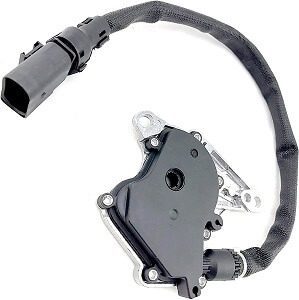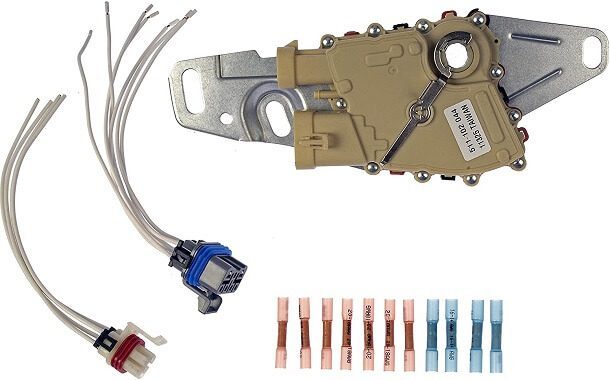Transmission Range Sensor Cost
Last Updated on December 23, 2022
Written by CPA Alec Pow | Content Reviewed by ![]() CFA Alexander Popinker
CFA Alexander Popinker
Modern cars have a growing number of sensors. Professional mechanics agree that one of the most important developments in recent years is the expansion of sensors to monitor mechanical systems. These sensors are responsible for the continuous recording of data and the transmission of this valuable information to the engine control unit.
The transmission range sensor is one of the most important sensors of a car and as with any car part, it can get broken over time and might need to be replaced.
How much does a transmission range sensor replacement cost?
You should expect to pay anywhere between $200 and more than $500 for a transmission range sensor replacement. However, the average price would be around $350.
In general, it would be more expensive to replace the transmission gear sensor for a modern car because these most likely use Hall sensors, which have a more complex circuit and are more expensive.
In the table below you will find the average costs of the transmission range sensor replacement for different types of cars. You should know that these costs are averages and will depend on the location of the mechanic and the age of your car.
| Make/Model | Price |
|---|---|
| Audi A4 | $330 |
| BMW 3 Series | $300 |
| Nissan Altima | $450 |
| Ford Mustang | $320 |
| Ford Fusion | $430 |
| Ford F-150 | $210 |
| Chevy Silverado | $475 |
| Toyota Corolla | $275 |
| Toyota Camry | $500 |
| Honda CRV | $430 |
| Honda Civic | $250 |
As you will notice, the cost of a transmission range sensor varies based on the make and model of the vehicle. Obviously, it would be more expensive to repair the sensor of high-performance and luxury brand vehicles.
You might also like our articles on the cost of the car transfer case replacement, transmission front seal leak repair, or transmission rebuild.
How much do transmission range sensor parts cost?
In case you don’t want to hire a professional and prefer to replace the sensor yourself you should know that you can purchase the parts online. Expect to pay anywhere between $25 and $85 for the transmission range sensor parts.
The majority of the customers have said that they paid around $45 for a good-quality transmission sensor. In the table below you will find the average costs for some of the most popular transmission sensor parts.
| Product | Price |
|---|---|
| Beck Arnley 090-5099 Transmission Speed Sensor | $45 |
| Dorman 511-103 Transmission Range Sensor | $120 |
| ACDelco GM 88962315 Transfer CAse Position Sensor | $45 |
| Genuine Honda 28900-RYF-023 Position Sensor Assembly | $100 |
| Motorcraft SW6538 Sensor | $55 |
| Ensun 31935-8E007 Transmission Speed Sensor for Nissan Altima | $25 |
| NewYall Transmission Range Sensor Neutral Safety Switch | $40 |
| APDTY 134100 Transm Range Sensor Safety Switch | $45 |
| SURIEEN Transmission Range Sensor Safety Switch | $40 |
| Standard Motor Products NS129 Neutral Switch | $45 |
| Dorman 511-101 Transmission Range Sensor | $35 |
As you can see, the cost of the sensor itself is not that high and the main thing that influences the price is the type of sensor you purchase: inductive or Hall. The cost of the hall sensors is higher than the cost of the inductive sensors because the parts which produce the magnetic fields are more complex.
Factors that influence the cost of the transmission range sensor replacement
- Sensor location – In the majority of cars the transmission gear sensor is placed either on the inside or outside of the transmission box. It would be easier and cheaper to replace the sensors located outside the box because you will not have to disassemble the transmission to get to them.
- Type of sensor – As we already mentioned, there are two types of transmission gear sensors: inductive and Hall and the Hall ones are more expensive.
- The age of the car – The costs will be also affected by the age of the car. Most probably, you will have to replace some other parts in addition to the transmission range sensor if your car is over ten years old.
- The make and model of the car – For some models like foreign cars the transmission range sensor replacement cost will be higher because these require specialized parts and labor for fixing.
Transmission Range Sensor Overview
 The transmission range sensor is used to measure the position of gears, clutch coupling, and speed in a particular transmission system (such as a car). Each transmission range detection system has a control module or control unit. The transmission speed is required by the control unit to adjust the shift pressure as it changes gears and to decide which gear needs to be engaged at a time. A transmission control module can detect when the clutch is engaged and disengaged.
The transmission range sensor is used to measure the position of gears, clutch coupling, and speed in a particular transmission system (such as a car). Each transmission range detection system has a control module or control unit. The transmission speed is required by the control unit to adjust the shift pressure as it changes gears and to decide which gear needs to be engaged at a time. A transmission control module can detect when the clutch is engaged and disengaged.
The transmission range sensors can be of two types: inductive and hall sensors.
Inductive sensors use electrical fields to detect motion and position.
On the other hand, hall sensors detect magnetic fields to measure the position of the gear switch. The majority of the modern cars use hall sensors because these can detect static magnetic fields and not only the changes in the electric field. Though, in general, inductive transmission sensors have a simpler circuit and cost less to be replaced.
How can we detect a transmission range sensor failure?
- The symptoms of a faulty transmission range sensor are:
- The car will not be able to start its engine.
- The engine indicator light comes on.
- Low engine performance.
- The vehicle remains locked in one gear.
- The control unit switches to emergency mode when it detects an error in the operation of the transmission system.
- Acceleration may become slow.
- The transmission may automatically switch to neutral without informing you in advance.
- Improper gear changes may occur during a traffic light stop.
- The driver may not be able to shift to neutral.
- The driver may get stuck while driving on a slope.
- There may be a delayed shift response from the lower gears as you accelerate.
- The torque converter may not work properly.
Can I drive with a faulty transmission range sensor?
This depends on the type of car you have. If you have a modern car and the sensor is broken, then the car will completely lock up in park or neutral mode and you will not be able to move the vehicle. Even though you can start the car, most probably it will be in limp mode and you will not be able to change gears.
How often should I change the transmission range sensor?
Transmission gear sensors are designed to last for the entire lifespan of your car and are not rated for any mileage. Anyway, these may fail after around ten years and it happens randomly. It is recommended to verify the sensor once every 50,000 miles and change it if necessary.
How long does it take to replace a transmission range sensor?
You should expect to wait for around 2 to 3 hours if you get your car to a professional to do this job. Anyway, it may take a little bit longer if the sensor is placed inside the transmission box because the mechanic will have to disassemble it and put all the pieces back in place.
Can I replace the transmission range sensor myself?
This depends on the type of car you own and the sensor where is located. If it is placed outside the transmission box, then you could easily replace it yourself.
On the other hand, if it is located inside the transmission box, then you will want to hire a professional because the job is more complex and there is the risk to damage some other parts if you are not good with mechanics.
Conclusion
Many of us may not give too much importance to the transmission gear sensor, but this is a very important part of your car. In case this does not work properly you will not be able to accelerate your car or change the gears.
Luckily, it is not that hard or expensive to replace the transmission gear sensor. The main factors that will affect the cost are the location of the sensor and its type.
It is recommended to change a faulty sensor as soon as possible because this can lead to difficulties in operating your car.
Finally, you should ask for multiple price offers from the mechanics in your area and choose the one that works the best for you.


Leave a Reply
Want to join the discussion?Feel free to contribute!